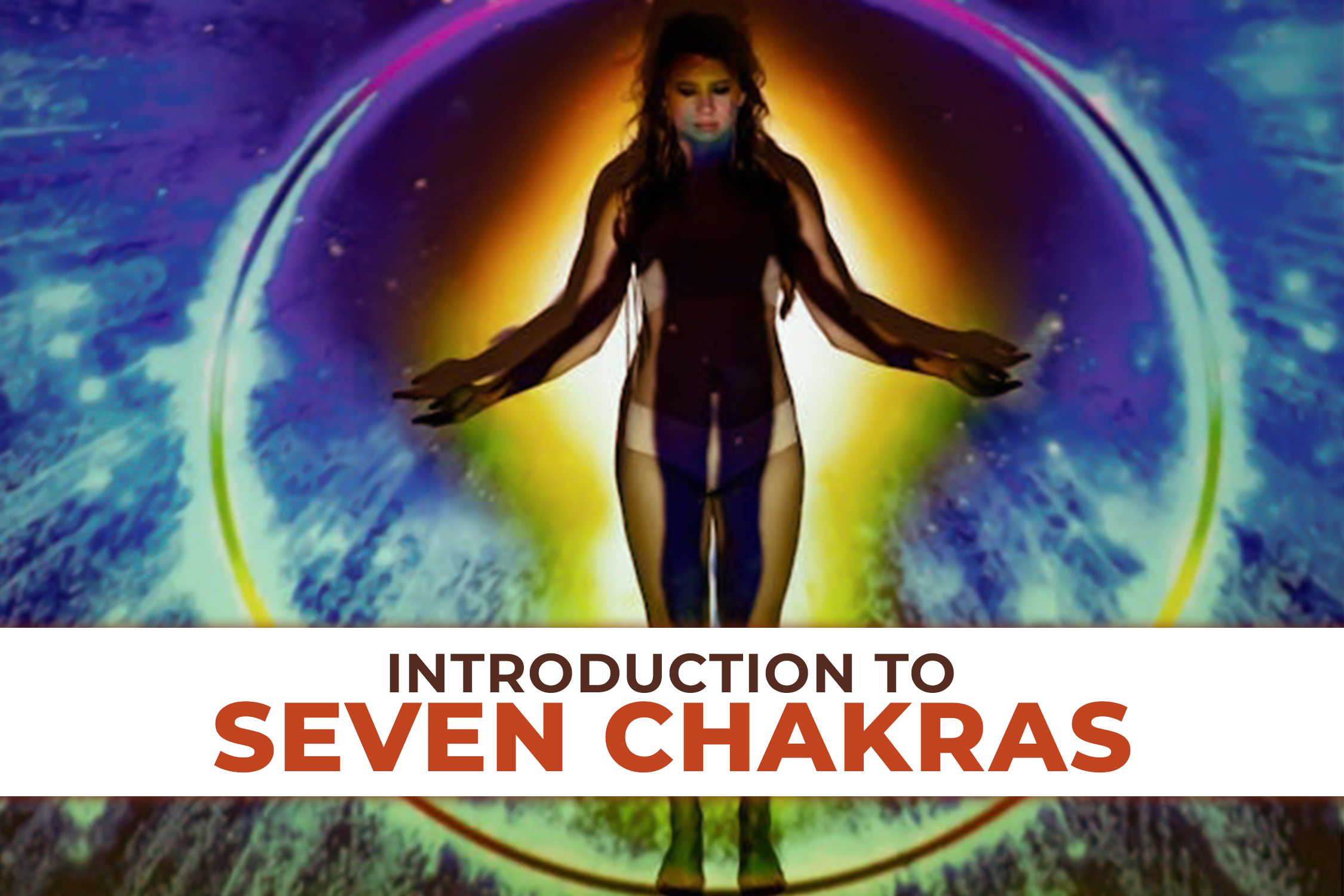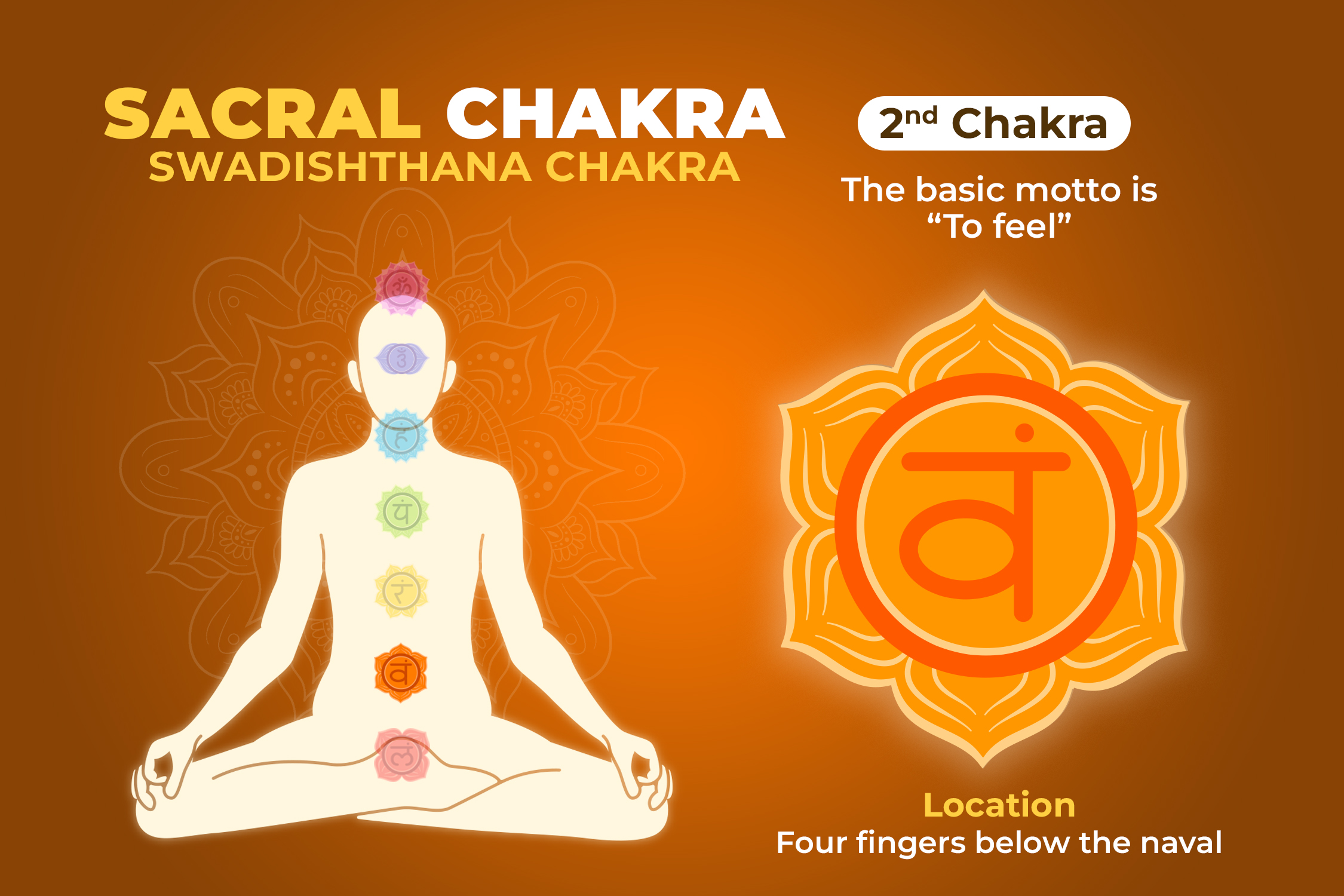Introduction to Seven Chakras


Table of Contents


Introduction
Chakras are widely talked about, but not everyone knows what exactly chakras are. These are bundles of energy that, when activated, work at a higher frequency to balance all energies, thus helping in the healing of the body.
Focusing on chakras is a type of meditation that is not new. In Indian Vedic tradition, chakra meditation is an ancient practice. The word “Chakra” means “circle,” and it is believed that these are points where energies accumulate.
It is said that there are 109 chakras, with 108 in the physical body and one in the astral body, commonly called the “aura.” There are seven main chakras that people specifically focus on during meditation, each representing different emotions and significance in our body. Let's study those chakras in detail.
Muladhara Chakra (Root Chakra)


- Motto: To be here (Represents presence and being grounded in reality.)
- Location: Base of the spine/tailbone, between the anus and genitals (The physical foundation of our body and energy.)
- Color: Red (Symbolizes strength, vitality, and passion.)
- Regulates: Stability, grounding (Ensures a sense of safety and security in life.)
- Imbalance: Fear, anxiety, stress (Disruption can lead to emotional and psychological challenges.)
- Mantra: Lam (A powerful sound to activate and balance the energy.)
- Element: Earth (Represents solidity, foundation, and support.)
- Petal: Four-petal lotus (Symbolizes the basic instincts of survival and grounding.)
Swadishthana Chakra (Sacral Chakra)


- Motto: To feel (Represents emotions, sensations, and intimacy.)
- Location: Four fingers below the navel (Central point of emotional and creative energy.)
- Color: Orange (Symbolizes warmth, enthusiasm, and creativity.)
- Regulates: Sexuality, desires, fertility, pleasure, creativity (Governs emotional expression and life pleasures.)
- Imbalance: Guilty, irresponsible (Leads to feelings of shame and lack of control.)
- Mantra: Vam (Chanted to harmonize emotional and creative energies.)
- Element: Water (Represents fluidity, adaptability, and connection.)
- Petal: Six-petal lotus (Symbolizes the complex emotions and creative potential within.)
Manipur Chakra (Solar Plexus Chakra)


- Motto: To Act (Represents willpower, determination, and action.)
- Location: Above the navel; between navel and solar plexus (The core of personal power and self-esteem.)
- Color: Yellow (Symbolizes clarity, energy, and intellect.)
- Regulates: Strength, confidence, mental balance (Governs self-discipline and emotional resilience.)
- Imbalance: Fatigue, digestive, liver problems (Indicates low energy, poor digestion, and emotional instability.)
- Mantra: Ram (A chant to ignite the inner fire and enhance focus.)
- Element: Fire (Represents transformation, vitality, and courage.)
- Petal: Ten-petal lotus (Symbolizes the complexity and strength of personal power.)
Anahata Chakra (Heart Chakra)


- Motto: To Love (Represents the essence of love and compassion.)
- Location: Middle of the chest (The center of emotional energy and relationships.)
- Color: Green (Symbolizes growth, harmony, and balance.)
- Regulates: Unconditional love, compassion, kindness (Governs our ability to connect and empathize with others.)
- Imbalance: Emotional struggle, restlessness, lack of empathy (Can lead to difficulties in relationships and self-love.)
- Mantra: Yam (A chant to open the heart and foster emotional healing.)
- Element: Air (Represents freedom, lightness, and the breath of life.)
- Petal: Twelve-petal lotus (Symbolizes the expansive nature of love and connection.)
Vishuddhi Chakra (Throat Chakra)


- Motto: To Speak (Represents communication, truth, and expression.)
- Location: Throat (The center of verbal expression and communication.)
- Color: Blue (Symbolizes calmness, clarity, and trust.)
- Regulates: Peaceful, good communication, strong self-expression (Governs the ability to express oneself and listen to others.)
- Imbalance: Shy, arrogant, throat-related disorders (Can lead to communication issues and physical throat problems.)
- Mantra: Ham (A chant to enhance clear communication and self-expression.)
- Element: Space (Represents openness, expansiveness, and connection to the universe.)
- Petal: Sixteen-petal lotus (Symbolizes the diverse ways of communication and expression.)
Ajna Chakra (Third Eye Chakra/Agya Chakra)


- Motto: To Know (Represents intuition, wisdom, and insight.)
- Location: Between eyebrows (The seat of perception and awareness, also known as the third eye.)
- Color: Indigo (Symbolizes deep understanding, spirituality, and self-awareness.)
- Regulates: Spiritual, mental strength, good vision (Governs insight, clarity, and spiritual connection.)
- Imbalance: Manipulative, panic, fear, eye problems (Can lead to confusion, fear, and vision issues.)
- Mantra: Yam (A chant to enhance spiritual awareness and intuition.)
- Element: Air/light/silver (Represents purity, illumination, and the higher mind.)
- Petal: Two-petal lotus (Symbolizes the duality of perception and insight.)
Sahasrara Chakra (Crown Chakra)


- Motto: To See (Represents higher consciousness and enlightenment.)
- Location: Top of the head (The crown chakra, connecting to the divine.)
- Color: White/Violet (Symbolizes purity, spiritual connection, and wisdom.)
- Regulates: Wisdom, strong nervous system (Governs spiritual understanding and mental clarity.)
- Imbalance: Mental disorders, spiritual crisis (Can lead to disconnection and confusion.)
- Mantra: Silence/Om (A chant for unity, peace, and connection with the universe.)
- Element: Inner light/White light (Represents pure consciousness and enlightenment.)
- Petal: Thousand-petal lotus (Symbolizes infinite possibilities and the unity of all.)
क्या आप योग में करियर बनाने को लेकर "Confuse" हैं?
Join Free Webinar By Maneesh Sir
- Know About Opportunities in the Growing Yoga Sector.
- Learn from a Yoga Teacher with Over 15 Years of Experience.
- Special Offer for Webinar Attendees.

